Lexicon of the Hamas Organization
Iran

Iran. Credit: ‘The World’ FB page.
Iran, a country with a rich tapestry of history dating back a millennia, underwent a pivotal transformation in 1979 that set the stage for its contemporary role in Middle Eastern politics. The Islamic Revolution not only reshaped Iran’s internal structures but also its external relations, particularly with entities like Hamas and within the broader Arab-Israeli conflict.
Iran - Background Information
Iran is located in Western Asia, Iran is home to one of the world’s oldest civilizations. It was once the heart of the Persian Empire, a cultural and political powerhouse. The modern state of Iran was known as Persia until 1935 when it was renamed to reflect its indigenous heritage. Iran’s strategic position and abundant natural resources, particularly oil, have made it a focal point of international interest and intervention.
The 20th century was a period of significant change for Iran, culminating in the 1979 Islamic Revolution. The revolution saw the overthrow of the Pahlavi dynasty and the establishment of the Islamic Republic, led by Ayatollah Ruhollah Khomeini. This shift from a secular, Western-aligned monarchy to a theocratic Islamic regime significantly altered Iran’s domestic policies and international alignments.
Iran’s Political Situation Post-1979 Revolution:
After 1979, Iran’s political structure centered around Islamic governance, with the Supreme Leader holding ultimate authority. The country’s foreign policy pivoted towards opposing Western influence in the Middle East, particularly the United States and its ally, Israel. Iran positioned itself as a defender of Islamic values and supporter of Muslim causes, leading to complex relationships with its neighbors and the international community.
Iran and the Hamas Organization: A Strategic Alliance
Hamas’s Ismail Haniyeh and Iran’s President Raisi. Credit: ‘Reuters’ FB page.
Iran’s support for Hamas, a Palestinian terrorist militant group, has drawn international attention and scrutiny. Hamas, labeled a terrorist organization by several countries, including the United States, has found a steadfast ally in Iran. This alliance is rooted in Iran’s ideological alignment with Hamas’s resistance to Israel and its vision of an Islamic state. Iran’s financial and military aid to Hamas has played a significant role in shaping the dynamics of the Palestinian-Israeli conflict.
The Arab-Israeli Conflict: A Long-Standing Struggle
The Arab-Israeli conflict, a protracted struggle spanning decades, has left an indelible mark on the Middle East. Iran’s involvement in this conflict extends beyond mere rhetoric; it has actively supported Hezbollah, a Lebanese militant group engaged in conflicts with Israel. Furthermore, Iran’s nuclear program has raised concerns among Western powers and Israel, as it is perceived as a potential threat to regional stability. The fear of nuclear proliferation adds another layer of complexity to the already tense situation in the Middle East.
Lexicon of the Hamas Organization
Qasem Soleimani
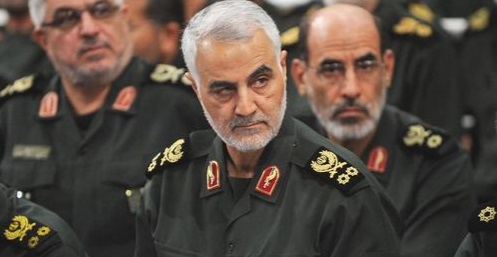
Qasem Soleimani. Credit: Bloomberg FB page.
Qasem Soleimani, born on March 11, 1957, in Qanat-e Malek, Kerman Province, Iran, was a prominent figure in the Middle Eastern geopolitical landscape, particularly in the context of the Israel-Iran conflict. His career in the Islamic Revolutionary Guard Corps (IRGC) and his leadership of the Quds Force marked him as a key player in shaping Iran’s foreign military and political strategies.
Early Life
Soleimani’s early life was marked by hardship. He left school at 13 to work on construction sites, helping to repay his father’s debts. Influenced by the sermons of Hojjat Kamyab, a protégé of Ali Khamenei, he began engaging in revolutionary activities.
Military Career
Joining the IRGC in 1979 following the Iranian Revolution, Soleimani quickly advanced, playing a significant role in suppressing a Kurdish uprising and serving in the Iran-Iraq War (1980-1988). His strategic and brave actions during the war earned him rapid promotions.
Command of Quds Force
Soleimani assumed command of the IRGC’s Quds Force between 1997 and 1998. Under his leadership, the Quds Force evolved into an elite unit for covert and expeditionary warfare, extending Iran’s geopolitical influence across the Middle East.
Role in the Israel-Iran Conflict
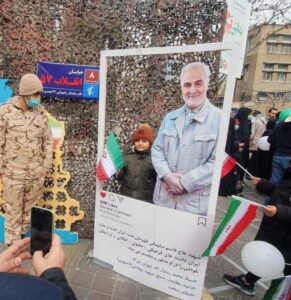
An Iranian child next to Sulimani’s cut out. Credit: Israel Defence forces FB page.
Soleimani’s strategic military interventions were pivotal in shaping the Israel-Iran conflict. He was instrumental in the creation and maintenance of Hamas’ tunnel warfare network in the Gaza Strip. This strategy effectively brought Iran’s influence to Israel’s borders, altering regional dynamics.
Arming and Training Iran’s Proxies
Under Soleimani’s command, the Quds Force played a crucial role in supporting and arming Iran’s proxies, like Hezbollah in Lebanon and Hamas and the Palestinian Islamic Jihad in Gaza. These groups received substantial funding, training, and weapons from Iran, enabling them to conduct operations against Israel. In Syria, instead of using a terrorist proxy, Iran directly entrenched itself, influencing the political and military actions of the Assad regime. This involvement allowed Iran, alongside Hezbollah, to establish military bases near Israel’s northern border.
Assassination

Anniversary of Sulimany’s assassination. Credit: Anadolu Agency FB page.
Soleimani was assassinated on January 3, 2020, by a U.S. drone strike near Baghdad International Airport. This act escalated tensions between the U.S. and Iran, sparking debate over its legality and repercussions. Iran termed the attack as state terrorism, leading to heightened hostilities, including Iran’s missile attacks on U.S. forces in Iraq.
In conclusion, Qasem Soleimani’s life and career were deeply intertwined with the military and political developments in the Middle East. His actions and strategies significantly influenced Iran’s foreign policy and its conflict with Israel. His assassination marked a pivotal moment in ongoing tensions between Iran and the United States, with far-reaching implications for regional stability and the Israel-Iran conflict dynamics.
Legacy on the Arab Israeli Conflict
Qasem Soleimani’s legacy in the Arab Israeli conflict is marked by his strategic and tactical contributions to Iran’s proxy groups in the region. His efforts in arming, training, and guiding organizations like Hezbollah, Hamas, and Palestinian Islamic Jihad significantly intensified the conflict’s dynamics. By empowering these groups, Soleimani helped solidify Iran’s role as a key player in the conflict, projecting its influence directly to Israel’s borders. His actions fostered an environment of heightened tension and frequent confrontations, leaving a lasting impact on the security and political landscape of the Middle East. His death, while altering the immediate strategic calculations, has not diminished the long-standing influence of the strategies he implemented in the region.
Lexicon of the Hamas Organization
Al Shifa Hospital
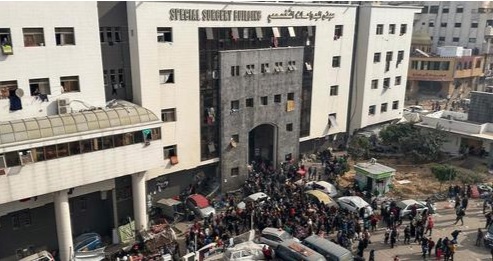
Shifa Hospital. Credit: ‘Washington Post’ FB page.
Al-Shifa Hospital, the largest medical facility in Gaza, has played a significant role in the region’s history, particularly during various conflicts involving Israel and Palestinian factions. This article provides an overview of the hospital’s background, its role in conflicts and the controversies surrounding it.
Background and History
Al-Shifa Hospital, originally a British Army barracks, was transformed into a hospital in 1946. During the 1948 Arab Israeli War, it became one of Gaza’s primary medical facilities. Following the war, the Egyptian administration expanded the hospital, adding various departments. Post the 1967 Six-Day War, when Israel occupied Gaza, the entire Egyptian hospital staff was taken prisoner, and subsequently, the hospital underwent significant renovations and expansions under Israeli administration. This included the addition of a large basement in the 1990s, which later became a point of controversy regarding its use.
Use During the 2007 Fatah-Hamas Conflict
During the Fatah-Hamas conflict in June 2007, Al-Shifa Hospital became a site of violence between the two factions. The conflict led to the deaths of members of both groups within the hospital premises. Hamas also reportedly dismissed hundreds of Fatah-affiliated medical staff and used the hospital as a strategic location. This period was marked by fear and violence within the hospital, severely affecting its operation and medical staff.
Role in the Wars with Israel
Al-Shifa Hospital has been central during various wars between Israel and Gaza. For instance, during the 2008-2009 Gaza War, the hospital was overwhelmed with casualties due to Israeli airstrikes. Allegations surfaced that Hamas used the hospital as a military base, a claim that was difficult to verify due to restricted access to Gaza by journalists. These allegations have been a recurrent theme in subsequent conflicts, contributing to the complexity surrounding the hospital’s role in the region.
Al-Shifa Hospital in the 2023 Israel-Hamas War

Hamas Tunnels under Al-Shifa Hospital. Credit: Ohad Hemo’s FB page.
The 2023 Israel-Hamas war brought Al-Shifa Hospital back into the spotlight. Israel and the U.S. accused Hamas of using the hospital as a command center, for storing weapons, and holding Israeli hostages.
Legal and Ethical Implications
The use of Al-Shifa Hospital in armed conflict raises significant legal and ethical questions. Under international law, hospitals enjoy protected status, which is jeopardized if the facility is used for military purposes. The allegations and counter-allegations regarding the hospital’s use in the 2023 conflict illustrate the challenges in maintaining this protected status in a war zone. The international community’s response and the calls for investigation highlight the complexities of warfare in densely populated urban areas like Gaza.
Conclusion
Al-Shifa Hospital’s history is deeply intertwined with the broader geopolitical and humanitarian issues in the Gaza Strip. Its role in various conflicts, especially the recent 2023 Israel-Hamas war, underscores the challenges of operating a major medical facility in a conflict zone. The hospital not only provides essential medical services to the population of Gaza but also represents the difficulties faced in preserving humanitarian spaces in times of war.
Lexicon of the Hamas Organization
Saleh al-Arouri
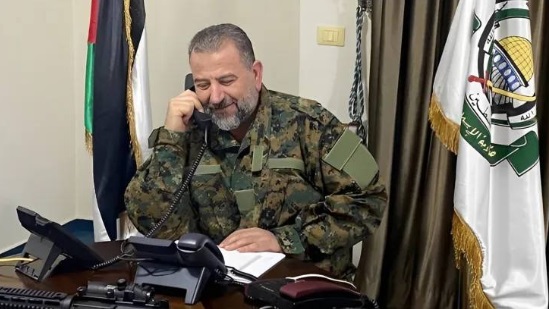
Saleh al-Arouri. Credit: ‘Eadio 786’ FB page
Saleh al-Arouri is a prominent Palestinian figure known for his deep involvement with Hamas. His association with Hamas has placed Saleh al-Arouri in the spotlight of the Israeli-Palestinian conflict.
Early Life and Involvement with Hamas
The early life of Saleh al-Arouri is marked by his gradual involvement with Hamas. This organization, known for its political and militant activities against the State of Israel, became a platform for Saleh al-Arouri to rise as a significant leader. His roles within the group have been diverse, encompassing both political strategy and militant operations.
Leadership and Strategy
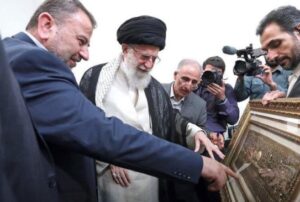
Saleh al-Arouri and Ayatollah Khamenei - Iran’s former leader. Credit: Hillel Fuld’s FB page.
As a leader in Hamas, Saleh al-Arouri has been involved in planning and directing various activities in the West Bank. His leadership style and strategic decisions have significantly influenced the group’s operations in this region. Saleh al-Arouri’s approach often mirrored the overarching goals and tactics of Hamas, particularly in relation to the Israeli-Palestinian conflict.
Assassination of Saleh al-Arouri
Saleh al-Arouri, was assassinated on January 2, 2024, in a strike on an office in the Dahieh neighborhood of Beirut, Lebanon. This strike, widely believed to be carried out by Israel, also resulted in the deaths of six other individuals, including high-ranking Hamas militants. His assassination occurred just a day before the fourth anniversary of the assassination of senior Iranian military commander Qassem Soleimani.
-
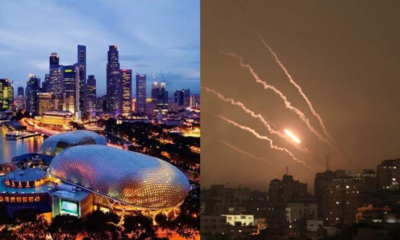
 News4 months ago
News4 months agoGaza could Have Been Singapore. Hamas Turned It Into a living nightmare
-

 News4 months ago
News4 months agoRape, slaughter, and atrocities—see the real face of Hamas
-

 News4 months ago
News4 months agoShe died while saving lives.
-
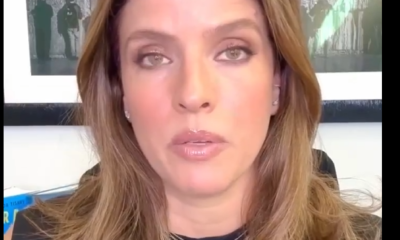
 News4 months ago
News4 months agoTrigger warning: This is the atrocity that’s happening in Israel right now
-
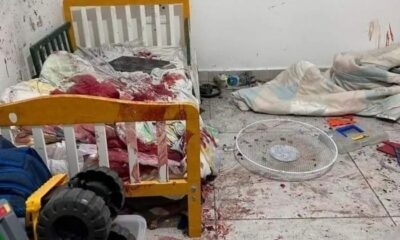
 News4 months ago
News4 months agoMonsters: Yahya Sinwar and Hamas kidnapped 150+ children and women.
-
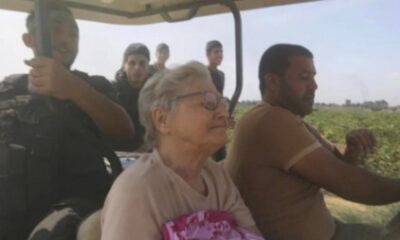
 News4 months ago
News4 months agoKidnapping elderly and children: Hamas are no heroes
-

 Hamas War Strategy, Tactics, and PR4 months ago
Hamas War Strategy, Tactics, and PR4 months agoThe War Crimes of Hamas and ISIS in Exploiting Civilians
-

 News4 months ago
News4 months agoHamas turns a music festival into a massacre






